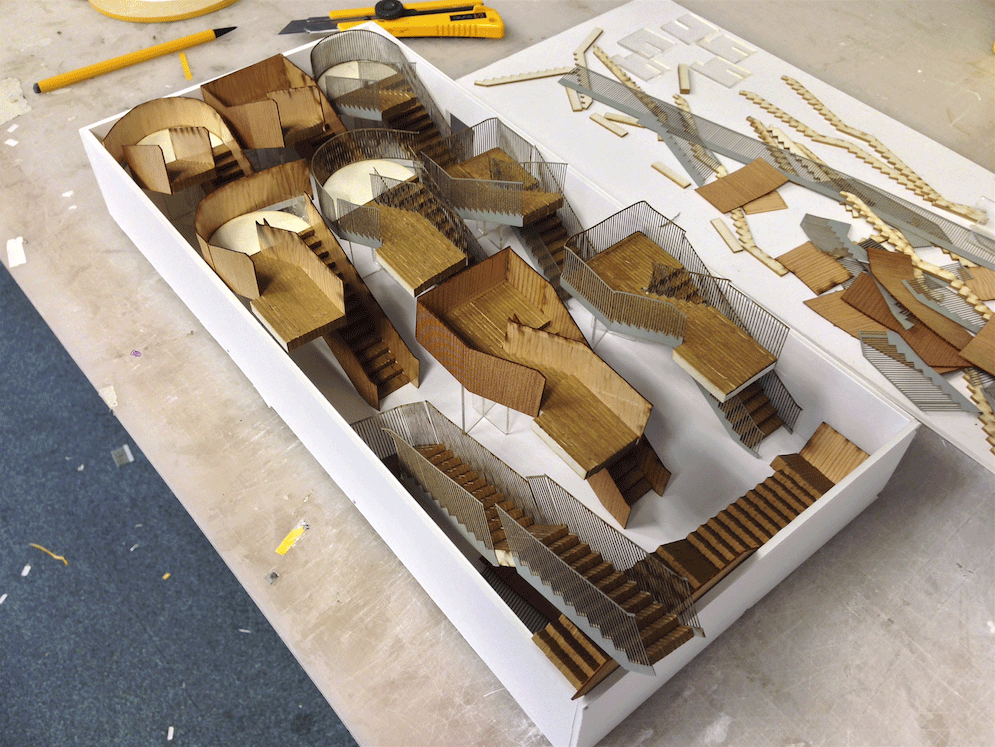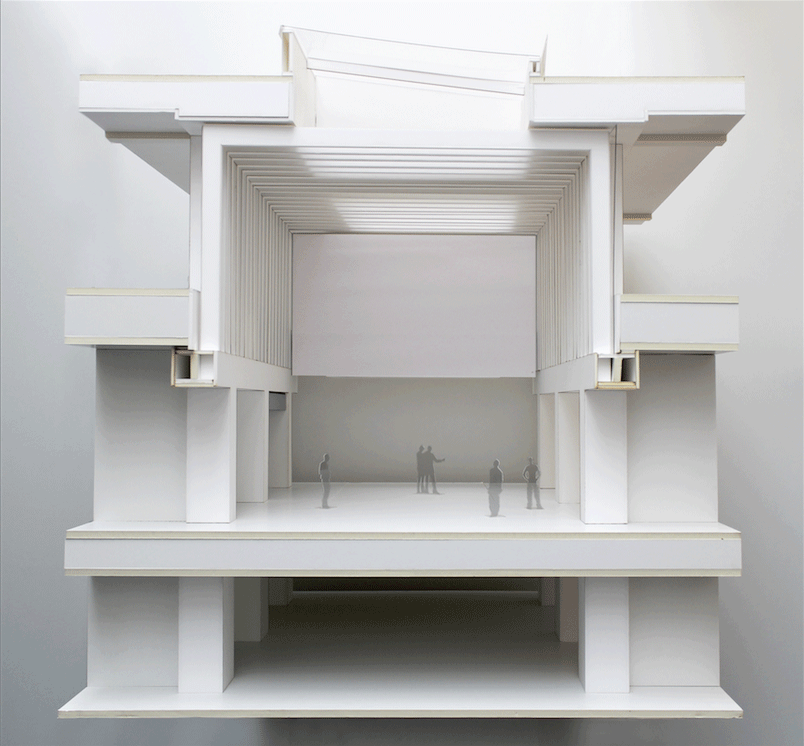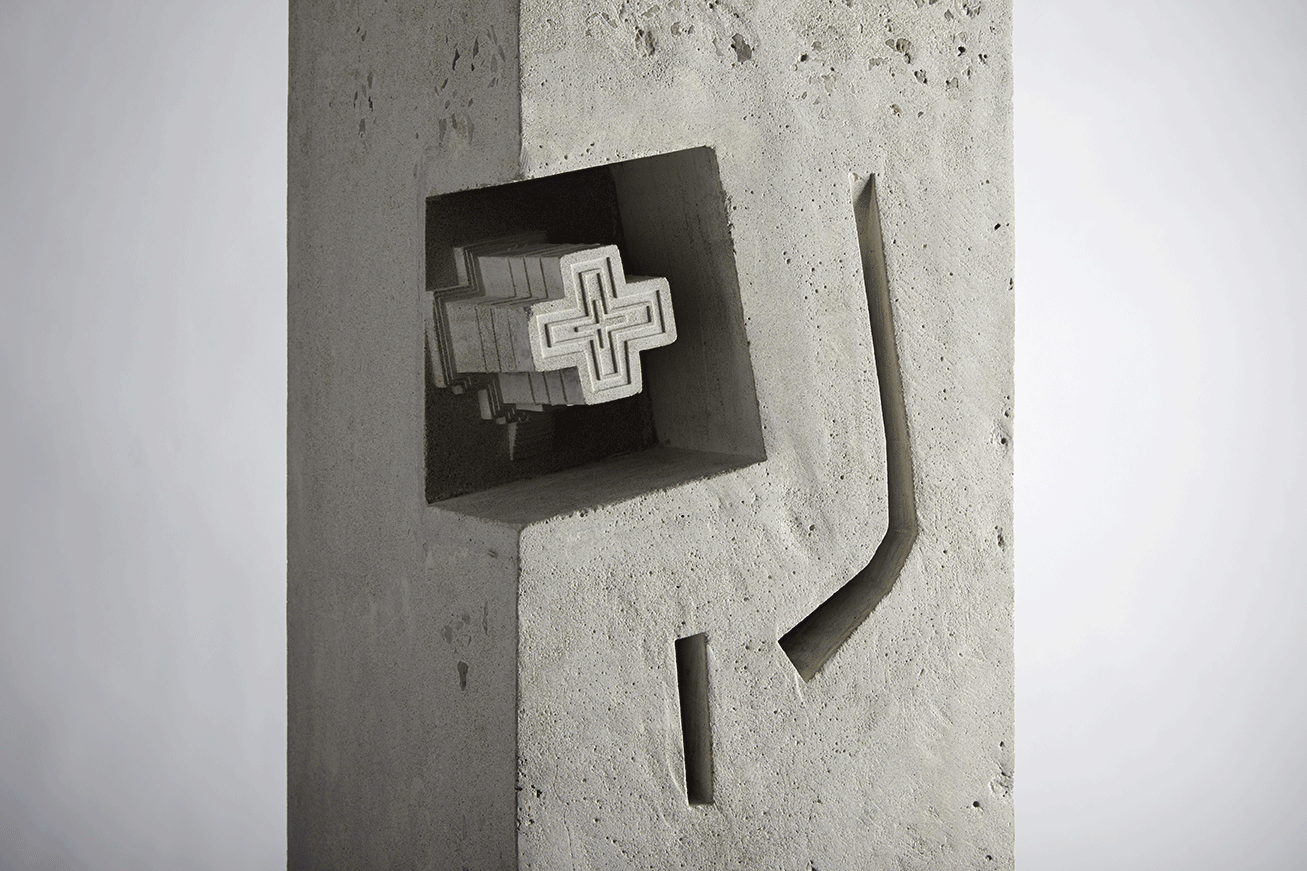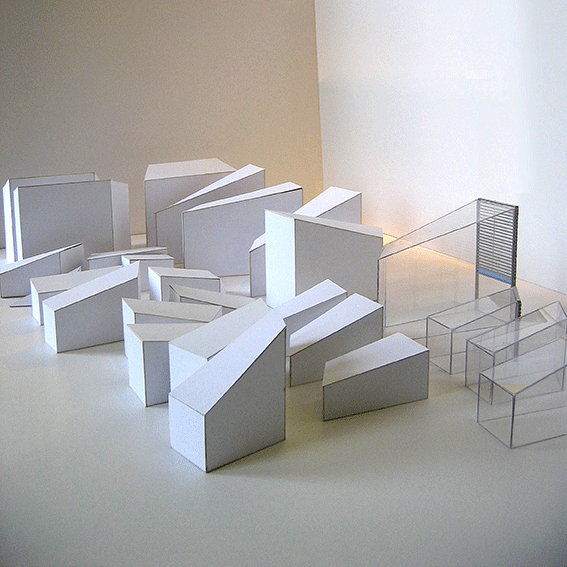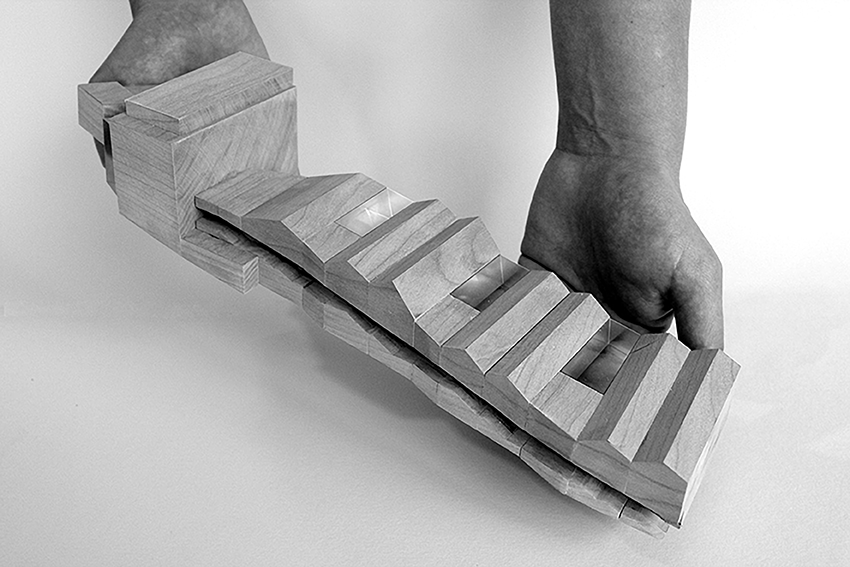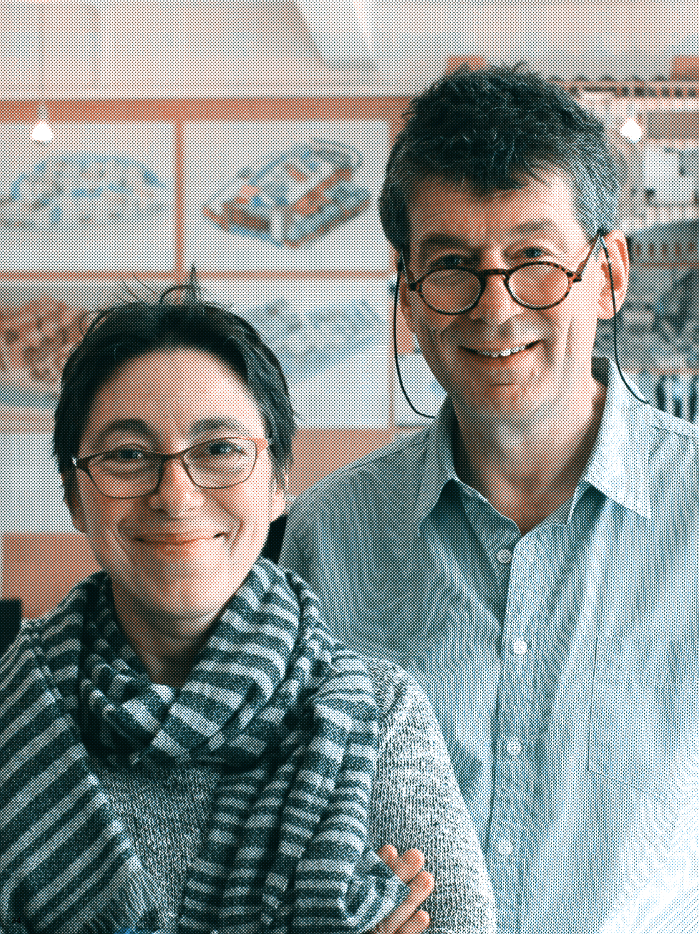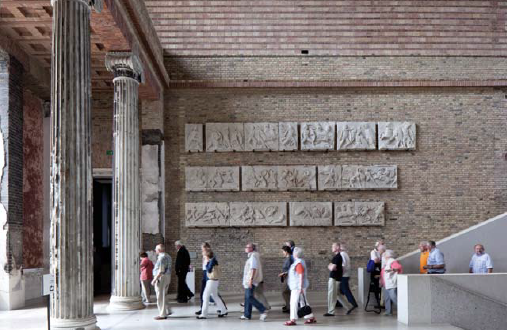© Stanton Williams
© Stanton Williams
© Stanton Williams
© Stanton Williams
© Stanton Williams
Why Make Models ?
En 2012, l’agence londonienne Stanton Williams remportait le prestigieux RIBA Stirling Prize pour le Sainsbury Laboratory de l’université de Cambridge. Si l’agence était à l’origine spécialisée dans la construction de musées et galeries, Stanton Williams réalise aujourd’hui des projets allant de l’échelle urbaine à celle du design, et la démarche adoptée par ses architectes est directement influencée par leur travail en maquette. À ce sujet, découvrez la tribune de Gavin Henderson, que AA vous livre dans sa langue originale.
« I take a pencil and make marks on paper. I take pieces of card and hold them together, reconfigure, cut, pin, add, fold, subtract, assemble, carve, disassemble, reassemble. In each case the hand thinks. Sometimes there’s a mistake. One sketch elides with another to create something unexpected. A broken model suggests a new spatial arrangement. Accidents are part of the process.
This is why we make models. Making by hand explores thoughts that are unpremeditated, pre-verbal, non-linear. The idea evolves before the brain has had time to set boundaries, enforce preconceptions. The craft of making things, whether drawings or models, is the essence of design.
Why is it necessary to restate the importance of model making? 3D CAD models, renderings and fly-throughs are now commonplace in the architects office, replacing physical drawings and models; physical model making itself is increasingly supplemented by laser cutters and 3D printers; CGI images of ever increasing “realism” extend the dominance of architectural culture by the visual image at the expense of other modes of perception. These tools have greatly increased the capacity for production, the sophistication of presentations and the ability to define complex geometries, but have a fundamental impact on the way we design, and the resulting architecture. As Juhani Pallasmaa says in The Eyes of the Skin, his study of the relationship between architecture and the senses, “the computer creates a distance between the maker and the object, whereas drawing by hand as well as model making put the designer into haptic contact with the object or space”.
Architectural technology is one facet of a world that is increasingly virtual and mediated by technology. Whist these technologies have become essential to the way we live – and design – in this context the physical and real become more, not less, valuable.
As architects we are engaged in the encounter between people and the physical world; how people experience place and how place affects them. Model making is the first step towards understanding this reality. Working with card, plaster, stone, wood, steel and glass a bridge to understanding the material presence of the building. Exploring the subtle unfolding of spaces and play of light a way of “being there” and sensing the feeling of the spaces we are designing in all their tactile and sensory complexity.
Within our Studio we work with the full range of technologies, but model making is fundamental to our culture and the development of our designs. Whereas our workshop facilities encourage precision and a pre-determined design which can be laser-cut and then assembled, we encourage the use of models which are loosely assembled – frequently simple assemblies of card held together with pins – and which are used to explore ideas and make design decisions: evolving working tools rather than models of a finished design. We have the benefit of a fantastic, dedicated model making team but encourage architects at all levels to use design models to explore ideas in this way.
Initial models may be simple sketch ideas but we also value the ability of abstract, sculptural models to express an initial idea or intention in its clearest form. As designs develop models are often built at a large scale, enabling a real sense of inhabiting the design; this may extend to full-size models of individual elements that allow proportions to be gauged against the scale of the hand or body.
Physical models allow us to share these spatial explorations with others: team members, clients, users and consultants. Design is collaborative. Discussion around design models allows everyone to engage with the design of spaces and contribute to the creative process. Models help us make design issues visible in the most concrete manner to all those involved – essential when CAD drawing means that designers spend much time at their own computer. The model provides a shared focus for design discussion in a way that promotes interaction, the exchange of ideas and an engagement with the messy, physical, creative process of designing the world in which we live. » •
—
Par Gavin Henderson, associé de l’agence depuis 1994
Découvrez également une sélection de projets de l’agence :
Musée d’Art de Nantes, France, livraison prévue en 2016.
Université des Arts de Londres, Central Saint Martin, 2011.
Sainsbury Laboratory, Cambridge, 2010.
Pour plus d’informations, rendez-vous sur le site de l’agence Stanton Williams.

